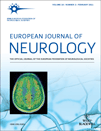Disease protection and interleukin-10 induction by endogenous interferon-β in multiple sclerosis?
Abstract
Objective: An immune activation response resembling virus or type I interferon responses has been observed in untreated multiple sclerosis (MS), but its pathogenic significance is uncertain. We studied the relationship between a type I interferon-like response in untreated patients with MS and disease activity.
Methods: Gene expression was analyzed by real-time reverse transcriptase polymerase chain reaction (PCR) in whole blood samples and by microarray analysis of mononuclear cells from untreated patients with MS, patients with MS treated with IFN-β, and patients with MS with anti-IFN-β neutralizing antibodies (NAb). Disease activity was assessed by gadolinium-enhanced magnetic resonance imaging.
Results: Eight of 36 untreated patients with MS had spontaneously increased expression of the type I IFN-induced gene MX1. Microarray gene expression analysis demonstrated that patients with increased spontaneous MX1 expression also had increased expression of other genes induced by regular IFN-β treatment of MS. MX1 expression correlated with FOXP3 and IL10 expression, and IL10 expression correlated negatively with disease activity on magnetic resonance imaging. Further, in vivo IL10 expression was lower in NAb-positive patients than in untreated patients with MS and healthy controls. Finally, ex vivo treatment of mononuclear blood cells with IFN-β induced the expression of IL10, and this was blocked by the addition of serum from NAb-positive patients with MS.
Conclusion: Our findings suggest that endogenous IFN-β may induce the expression of immunoregulatory IL10 in MS and that this might be associated with dampening of inflammatory disease activity.




